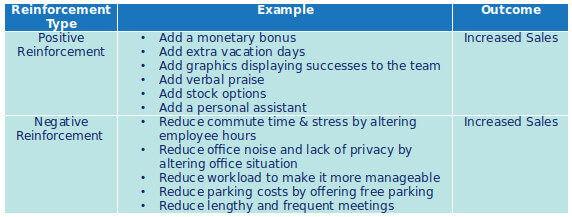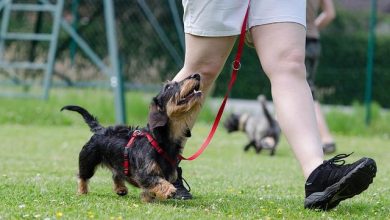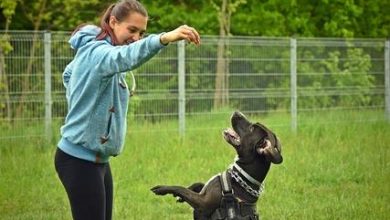How to Correct Unwanted Behavior With Positive Training

In the intricate dance of human and animal relationships, communication often transcends words, relying instead on a subtle exchange of actions and reactions. At the heart of this dynamic lies the challenge of addressing unwanted behaviors, a task that can feel as daunting as it is essential. Yet, within this challenge lies an opportunity—a chance to reshape behaviors not through punishment or coercion, but through the gentle art of positive training. This approach, rooted in empathy and understanding, invites us to explore a realm where encouragement replaces reprimand, and growth flourishes in an environment of support. Join us as we delve into the transformative world of positive training, discovering how this method not only corrects behavior but also strengthens the bond between humans and their animal companions.
Understanding the Principles of Positive Reinforcement
Positive reinforcement is a transformative approach to behavior correction that emphasizes rewarding desired actions rather than punishing unwanted ones. This technique is grounded in the idea that behaviors followed by positive outcomes are more likely to be repeated. By focusing on the positive, you can create an environment where individuals feel encouraged and motivated to exhibit good behavior naturally.
- Consistency: Ensure that rewards are given consistently for the desired behavior. This helps in establishing a clear connection between the action and the positive outcome.
- Timeliness: The closer the reward is given to the action, the stronger the association will be. Immediate reinforcement is key to effective training.
- Variety: Use a variety of rewards to keep the process engaging. These could range from verbal praise and treats to extra playtime or privileges.
- Personalization: Tailor the rewards to what is most meaningful to the individual, as this will increase their effectiveness.
Implementing these principles can not only help in correcting unwanted behavior but also in building a trusting and positive relationship. By understanding the underlying principles of this approach, you can foster an environment where desired behaviors flourish organically.

Crafting a Reward System That Works
Developing an effective reward system is key to encouraging positive behavior and discouraging unwanted actions. The foundation of a successful reward system lies in understanding the motivations and preferences of your audience, whether they are children, pets, or employees. Consistency is crucial; rewards should be given promptly and in response to specific behaviors. This not only reinforces the desired action but also creates a clear connection between behavior and reward.
To tailor your reward system effectively, consider implementing a mix of incentives that cater to different preferences. Some individuals may respond well to tangible rewards such as treats or bonuses, while others might value intangible incentives like praise or additional responsibilities. Consider these options:
- Verbal Praise: A simple, heartfelt acknowledgment can boost morale and reinforce positive behavior.
- Tangible Rewards: Items like toys, gift cards, or certificates can serve as powerful motivators.
- Privileges: Offering additional privileges or responsibilities can encourage a sense of achievement and trust.
- Time Off: Extra leisure time can be a highly valued reward for many individuals.
By thoughtfully combining these elements, you can create a dynamic and effective reward system that not only corrects unwanted behavior but also fosters a positive and motivated environment.
Identifying Triggers and Redirecting Actions
Understanding what triggers unwanted behavior in your pet is crucial for effective positive training. These triggers can range from environmental factors, like a doorbell ringing, to specific actions or items, such as a vacuum cleaner or unfamiliar visitors. The key is to observe and identify these stimuli that lead to undesired actions. Once identified, you can begin to work on redirecting your pet’s response.
Start by creating a list of potential triggers:
- Sounds: Thunderstorms, fireworks, or loud appliances
- People: Strangers, children, or specific family members
- Objects: Toys, furniture, or vehicles
After pinpointing these triggers, the next step is to redirect your pet’s actions towards more positive behaviors. This involves gradually exposing them to the trigger while rewarding them for remaining calm or performing a desired behavior, such as sitting or staying. Consistency is vital, as it reinforces the new, positive response over time. By focusing on reward-based techniques, you not only correct the unwanted behavior but also strengthen your bond with your pet.

Building Consistency and Patience in Training Sessions
Establishing a routine is crucial for effective training, as it allows both you and your pet to develop a rhythm that fosters learning and growth. Consistency doesn’t just mean repeating the same commands; it involves creating a stable environment where your pet feels secure and ready to learn. Set a specific time each day for training sessions, ensuring they are free from distractions. This helps your pet to anticipate the activity and prepares them mentally for the task at hand.
Patience is equally important, as it encourages a positive and nurturing atmosphere. Understand that learning is a gradual process and every pet progresses at their own pace. Celebrate small victories, and remember that setbacks are simply part of the journey. Avoid showing frustration, as this can lead to stress and confusion. Instead, focus on the following strategies to maintain patience:
- Break tasks into smaller steps: Teach new behaviors incrementally to prevent overwhelming your pet.
- Use positive reinforcement: Reward desired behaviors with treats, praise, or playtime.
- Stay calm and composed: Your demeanor influences your pet’s response, so maintain a relaxed attitude.
By weaving consistency and patience into your training sessions, you not only correct unwanted behaviors but also build a trusting and respectful relationship with your pet.



